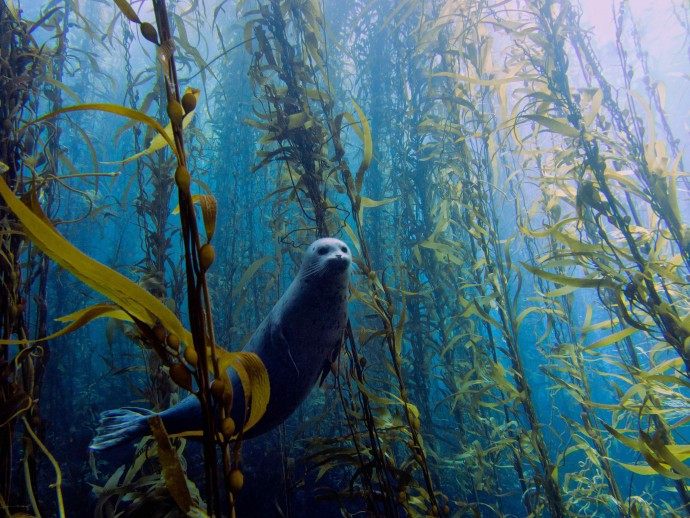Vital California kelp forests vanishing due to global warming

Just as climate change and pollution are triggering a massive destructive bleaching of Australia's Great Barrier Reef, global warming and a fundamental alteration in the Pacific Ocean ecology are destroying the nutrient-rich underwater kelp forests off America's west coast.
Large tracts of the giant seaweed along hundreds of miles of coast have vanished in the past few years in a transformation so rapid that it has startled scientists. Aerial surveys of kelp north of San Francisco from 2008 to 2014 by the California Department of Fish and Wildlife (CDFW) revealed a 93% decline — and quickly growing even worse. The seaweed forests are considered among the most productive ecosystems on the planet.
The kelp, home to some 700 ocean species, has been devoured by the ubiquitous spiky purple urchin whose predators have been eliminated by illness in an increasingly toxic Pacific or driven away by what scientist refer to as an unprecedented "warm blob" of water off the coast from Mexico to Alaska that further increased in temperature during El Nino conditions.
The warming water is also directly harmful to the kelp because it interferes with the normal upwelling of nutrient- rich cold water, which helps the seaweed grow. In recent years, the kelp has produced far fewer fronds, diminishing reproductive capability and making the seaweed more susceptible to destruction by waves — and more vulnerable to purple urchins.
Researchers describe the newly desolate ocean tracts as "urchin barrens." But the kelp stalks have been so stripped by the urchins that even they are now starving.
Kelp forests are routinely impacted, but this sudden, severe destruction is unusual. "You just don't see the whole forest up and down the entire North Coast go away," said Cynthia Catton, an environmental scientist with the CDFW in Bodega Bay, who sees the kelp destruction as a consequence of a "perfect storm" of negative environmental factors.
The disappearing kelp has already severely impacted the red Abalone population as well as red sea urchin, sought by commercial operations for sushi, notes Catton.
It's one more troubling sign of an imploding Pacific coastal ecology that has witnessed a plummeting fish population, higher ocean acid levels, toxic algal blooms and increasing numbers of stranded starving and dead sea lion pups — all largely attributed to the rising temperatures of the coastal waters.
Scientists are still tracking the pace of the vanishing kelp, and uncertain if it can replenish itself quickly in the right conditions.
One California organisation is taking aggressively action to help the underwater forests by destroying purple urchins. Staffers and volunteers working in a kelp restoration project for the Santa Monica Bay Recovery Foundation in Southern California have killed 3.3 million purple urchins, clearing 142,000 square meters of seafloor of the animals. As a result, the kelp has begun to bounce back.
The project's main goal is to kill enough urchins to restore more than 600,000 square meters of seafloor off California's Palos Verdes Peninsula south of Los Angeles, where the kelp canopy has decreased by 75% due to "development, pollution, over-fishing and a changing ocean climate," according to an organisation statement.
"Our underwater kelp forests are a lot like tropical rainforests or redwood forests, providing a lot of the same life-giving benefits," said Tom Ford, director of marine programs for the foundation. "Just as our land-based forests need to be protected by controlling the bark beetle, we are doing the same in the underwater forests."
© Copyright IBTimes 2025. All rights reserved.






















